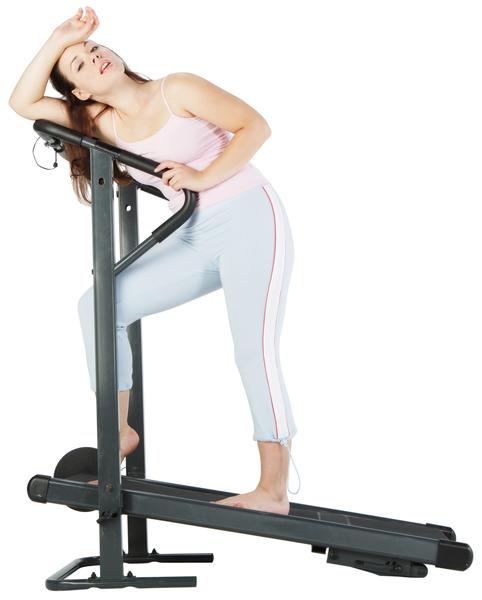
Article originally published on Woman: The Nest
Tired of the same old rhythm of your treadmill? You could go outside for a jog or bike ride, or you could vary your workouts with high-intensity interval training (HIIT). HIIT is a burst-and-recover exercise cycle. It has been used by generations of athletes to improve cardiovascular function, speed and strength. Both HIIT and cardio training have been shown to improve the heart’s stroke volume, which is the amount of blood pumped per beat, as well as its ability to contract forcefully. Furthermore, both methods improve the body’s ability to use and distribute oxygen and burn fat during and after exercise.
High-Intensity Interval Training
While the fitness industry has traditionally focused on longer-duration, lower-intensity aerobic training to improve cardiovascular health, HIIT has proven to be another effective method. A study published in the journal, “Medicine and Science in Sports and Exercise,” showed a greater improvement in stroke volume and maximal aerobic capacity in people doing HIIT as compared to traditional long-duration cardiovascular training. With HIIT, you work your muscles to fatigue for short bursts (think sprint) and follow that with a short rest period. For example, after a 10-minute warm-up, you could perform an intense minute of stepping, then walk around the room for one minute. You would repeat this interval 3-4 times for a full workout, then cool-down. HIIT can be done with virtually any aerobic exercise such as swimming, running, cycling or dancing. You can also incorporate short bursts of different exercises into a cycle. Because HIIT is physically demanding, it is recommended that you allow a full day of recovery between sessions and perform them no more than three days per week.
Cardio Training
Cardio training, short for cardiovascular training, is a long-duration aerobic exercise, generally consisting of the same activity throughout the exercise time frame. This type of endurance training creates an increased demand for oxygen over an extended time. Cardio training is longer duration and lower intensity than HIIT. Your goal is to maintain a pace that raises your heart rate between 60 and 80 percent of your maximum heart rate for at least 20 to 30 minutes. To determine your maximum heart rate, subtract your age from 220.
Rating of Perceived Exertion
Because heart rate can be affected by medications, allergies, food or illness, many trainers recommend using a scale of perceived exertion to measure exercise intensity. Perceived exertion is your own subjective measure of how hard your body is working. The Borg scale of perceived exertion ranges from a rating of 6 — no exertion at all, to 20 — maximal exertion. A rating of 9 is “very light” exercise, such as walking slowly. Thirteen is “somewhat hard,” but you can continue without duress. Seventeen is “very hard” — a healthy person has to push hard to continue. Cardiovascular aerobic exercise should maintain a rating of 12-14. At this level, you could talk to a friend but can’t sing a song. The rating during the active exercise of HIIT would be between 15 and 17 and during the rest phase between eight and 10.
The Winner Is…
Both HIIT and cardiovascular aerobic training improve the function of your heart, lungs and muscles. But HIIT has been shown to be slightly more effective at increasing heart function and aerobic capacity. HIIT also continues to burn fat for a longer time after the workout has ended. HIIT is an intense workout so beginners would benefit from longer-duration cardiovascular exercise until their fitness levels improve. As with any new exercise, start slowly and increase your intensity gradually to avoid injury.
References
- IDEA Fitness Journal: HIIT vs. Endurance Training: Battle of the Aerobic Titans
- Medicine and Science in Sports and Exercise: Aerobic High-Intensity Intervals Improve VO2max More Than Moderate Training
- Centers for Disease Control and Prevention: Perceived Exertion (Borg Rating of Perceived Exertion Scale)
- University of Luton Department of Sport and Exercise Science: Rating of Perceived Exertion During High-Intensity Treadmill Running
- OPTIM Physical Therapists, LLP: High Intensity Interval Training (HIIT) is Vastly Under Utilized by PT’s
About the Author
Cindy Killip is a medical exercise specialist, health coach, author and speaker who has been teaching and writing about exercise and wellness since 1989. She authored the book Living the BONES Lifestyle: A Practical Guide to Conquering the Fear of Osteoporosis [2012]. Killip holds multiple certifications through the American Council on Exercise and degrees in communications and sociology from Trinity University with a focus on pre-med and exercise science/lifetime fitness. She attended graduate school studying exercise physiology at the University of New Mexico.
This article was originally published on Woman: The Nest



